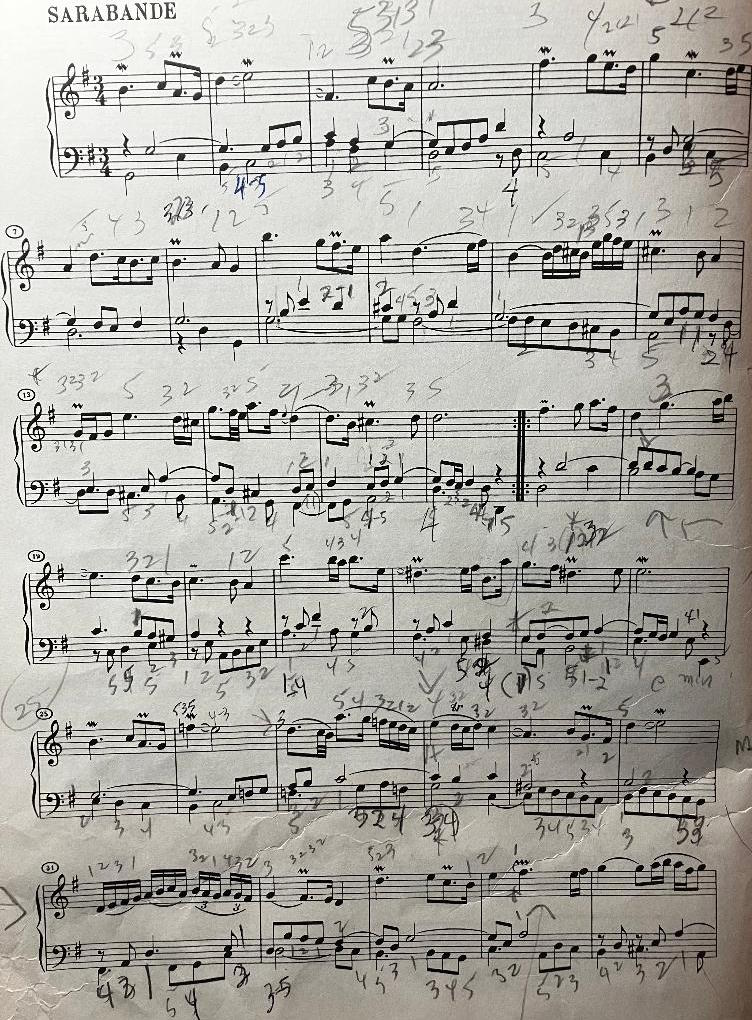As I revisited J.S. Bach’s memorable Sarabande movement from his French Suite No. 5, BWV 816, I stared at an Urtext score laden with ornaments of infinite variety –trills, mordents, parentheses showing upper and lower accents, loops on trills in opposite directions, etc. and to complicate matters, I was expected, by tradition, to improvise each section, adding more ornaments and original turns of phrases. What a challenge!

This time around, after having studied all Six French French Suites, and a large portion of the Little Preludes, I had a revelation that fleshing out a melody, undecorated by ornaments was the very first step in a sensible, layered learning process. Such a fundamental approach would prevent a reading from ornament to ornament in a mad pursuit of successive trills, turns, mordents etc. to cadence. (It’s easy to view a score as a map of these finger-trapping adornments that can become anticipatory landmines– fingers and hands freezing as they approach one symbol after another with surges of anxiety.)
Given the propensity to be intimidated by symbols that attach to what is primarily a melodic journey in the soprano, it’s best to go back to basics: Play a clean melodic line with contour and landscaping–shape it with relaxed wrists and arms, using a singing tone model. In practicing, be aware of Sequences that can invite intensity in ascent, or relaxation of dynamics in descent. In addition, Questions and Answers in four measure parcels or less should create an awareness of Responses and cadences. (temporary resting points)
When adding ornaments, “feel” the natural flow of the melody—and relax through an intricate design without tension-draining energy. Enjoy the ins and outs of these embellished perks of the melody, embracing a positive attitude. Playing beautifully has an underlying psychological component, so be attentive to natural “breathing” through quality repetitions in daily practice. (Spot practicing is important.)
Finally, a well-sculpted soprano melodic line filters through all voices, with or without ornaments. In Sarabande BWV 816, which is basically scored in three voices, the decorated top line, interacts with the tenor and bass that have opposing stems needing balance and delineation. For many learners, these lower lines tend to run into each other without contrast. To advance a satisfying synthesis of all voices, one must individually flesh out each of these lower voices for direction, contour, color, and balance. A stint of voice parceling, permuting Soprano and Bass, without and with the melodic ornaments; and practicing combinations such as Tenor and Bass, etc. help create a convincing rendering in the Baroque genre. Naturally, Harmonic Rhythm influences phrasing and is worth an analysis.
In these attached videos I apply the approach referenced in this posting.
***
Play Through
from Arioso7's Blog (Shirley Kirsten)
https://arioso7.wordpress.com/2023/05/14/practicing-j-s-bach-sarabande-bwv-816-in-a-sea-of-ornaments-first-explore-an-unadorned-melody/
No comments:
Post a Comment